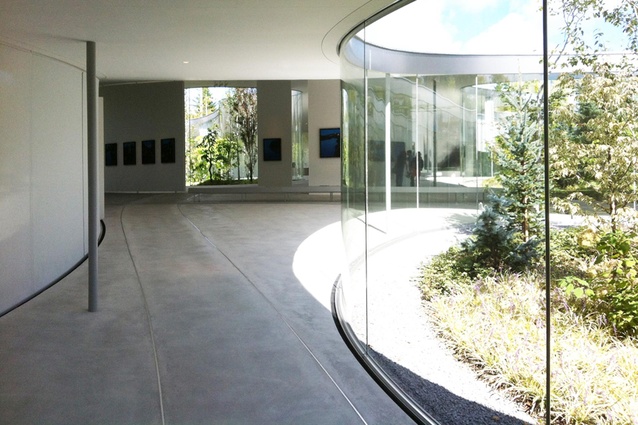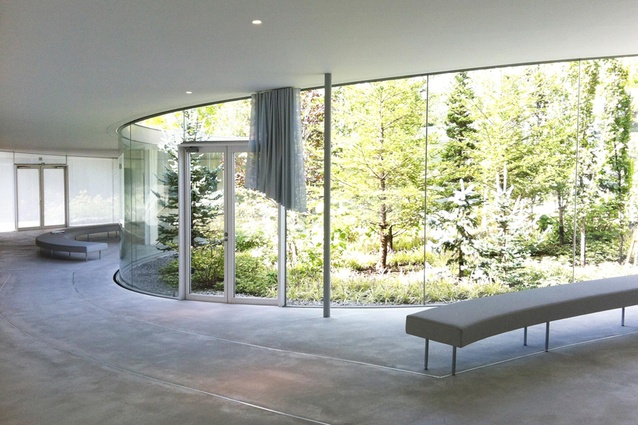Postcards from Japan: Part II
Tokyo can be cripplingly hot and humid in summer, and before air conditioning came along to provide less injurious conditions, those with means would escape the city for cooler climes. Karuizawa, a small town in the Japanese Alps 150 kilometers from Tokyo, first came to prominence in the late 19th century as a getaway favoured by Western missionaries. Japan’s imperial family later established a summer retreat in the area, and the town became popular with Tokyo’s moneyed elite as a resort. John Lennon and Yoko Ono spent several summers in the town, and Japan’s present Emperor and Empress first met on the courts of the local tennis club. Many architects are among those with second houses in Karuizawa, and Antonin Raymond, a Czech-born architect who came to Japan in 1919 to work on Frank Lloyd Wright’s Imperial Hotel and stayed on, would relocate his studio from Tokyo for the duration of each summer.
The town is nestled into alpine woods, and once beyond the main street one passes down cool, shady lanes, the open forest dotted here and there with houses. Being Japan, they are an aesthetically eclectic mix – standard Japanese houses, Swiss chalets, pioneer log cabins, and radically contemporary designs. Almost every significant Japanese architect has produced houses in the area, and the town’s forest lanes are an architectural trainspotter’s heaven.
I’ve come to see two buildings - an old one and a new one: Kazuo Shinohara’s 1975 House in Karuizawa and Ryue Nishizawa’s 2011 Hiroshi Senju Museum. The day’s transport is an exercise in contrast: after an hour zooming up from Tokyo on the bullet train, I switch to a rental bicycle to glide around the forest.
My first stop is the Hiroshi Senju Museum by Ryue Nishizawa. Nishizawa is best known as Kazuyo Sejima’s partner in SANAA, the Pritzker Prize-winning firm acclaimed for ultra-minimal but functionally innovative structures. The Museum is unusual in that it was built to present the work of a single, still-working artist. Hiroshi Senju is a painter who combines traditional Japanese techniques with a contemporary attitude to his subject matter, typically waterfalls and other natural scenes. Located on a large, gently inclined site, the Museum is effectively a single large room. Its floor follows the slope of the ground, and the roof plane undulates slightly independently of the floor, so that the ceiling height varies by as much as three meters across the room. The floor and ceiling are connected by seamless walls of curved glazing, and with both the light wells and building perimeter lushly planted (150 varieties of plants) sunlight and greenery seem everywhere present.
Inserted almost incidentally into this greenery-saturated space are two sets of objects: short walls which both display the paintings and prop up the roof; and long bench seats which snake through the space providing places to sit and linger. The lush greenery, reinforced by the natural themes in Senju’s paintings, suggests the spatial qualities of a forest. This atmosphere of openness and fluidity is aided by the building being much larger than would be normal for the amount of art it displays. The key element of a gallery for paintings – walls on which to hang – are here atomised and scattered. It is an astonishing building, but it calls to mind Philip Johnson’s famous quip, “architecture is the art of wasting space.”
Adjacent to the museum is the Museum Annex designed by Yasui Hideo Atelier. Containing the Museum’s café and gift shop, Hideo’s dark, metallic, aggressive angularity presents an extreme contrast with Nishizawa’s peroxide fluidity. It’s hard to imagine a single client commissioning two such buildings.
Shinohara’s House in Karuizawa stands on the town’s main street. It was originally built as a house and gallery for an artist, the two functions accommodated in buildings separated by a meandering courtyard. One of Japanese architecture’s most influential figures from the 1960s to the 1990s, Shinohara radically changed his style several times. This building dates from his third period, in which he created confrontingly abstract spaces, highly geometric and intense to the point of irrationality. The building is now a restaurant and therefore packed with chairs and tables. I’d only ever seen black and white photos – the space empty and prismatic – so it’s a shock that the domesticity that Shinohara worked so hard to erase now saturates the space. I leave wondering if Ryue Nishizawa has been there, and if he noticed what happens when “wasted space” is coerced drawn back into use.















